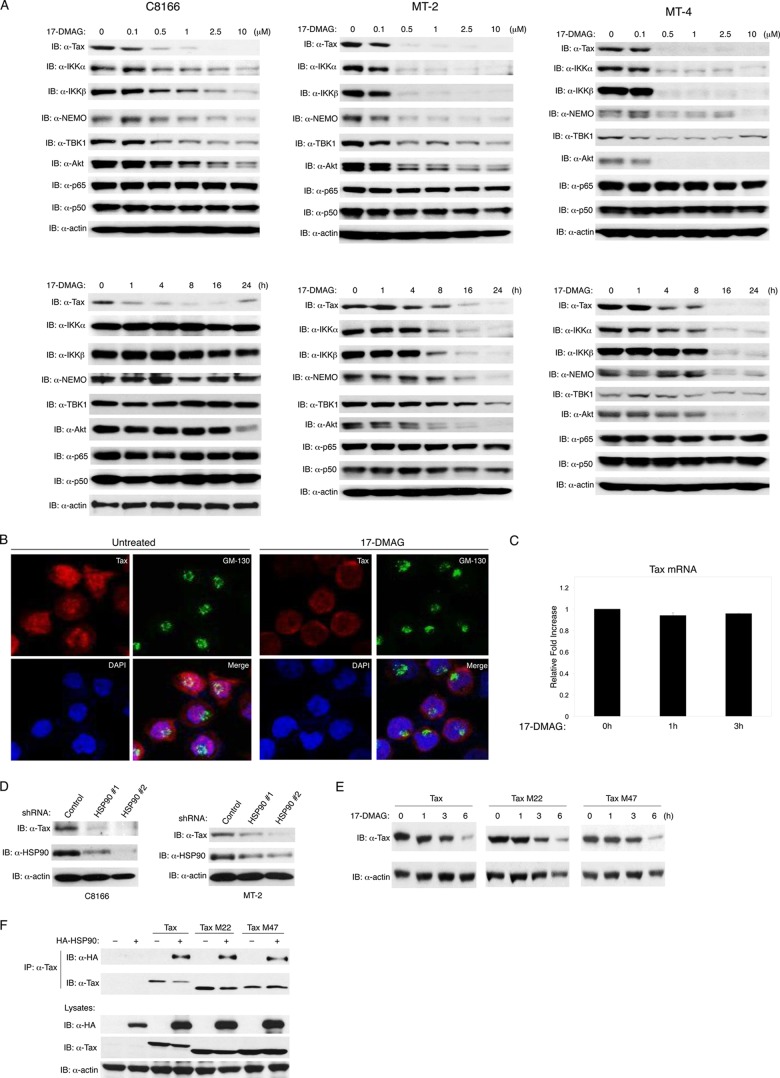Fig 2.
Inhibition of HSP90 promotes Tax degradation. (A) C8166, MT-2, and MT-4 cells were treated with 17-DMAG as indicated, and cell lysates were subjected to immunoblotting with the indicated antibodies. (B) C8166 cells were treated with 17-DMAG (0.5 μM) for 4 h, stained with DAPI, anti-Tax (red), and anti-GM-130 (green), and subjected to confocal microscopy. The bottom right panel shows merged images. (C) C8166 cells were treated with 17-DMAG (0.5 μM), and RNA was extracted for qRT-PCR analysis with Tax primers. (D) C8166 and MT-2 cells were infected with lentiviruses expressing two distinct HSP90 shRNAs and selected with puromycin. Cell lysates were subjected to immunoblotting with anti-Tax, anti-HSP90, and antiactin. (E) 293T cells were transfected with Tax, Tax M22, and Tax M47 plasmids. After 24 h, the cells were treated with 17-DMAG (0.5 μM) as indicated and cell lysates were subjected to immunoblotting with anti-Tax and antiactin. (F) 293T cells were transfected with HA-HSP90, Flag-Tax, Tax M22, and Tax M47 plasmids. After 24 h, cell lysates were immunoprecipitated with anti-Tax, and immunoblotting was performed with anti-HA and anti-Tax. Lysates were subjected to immunoblotting with anti-HA, anti-Tax, and antiactin.

